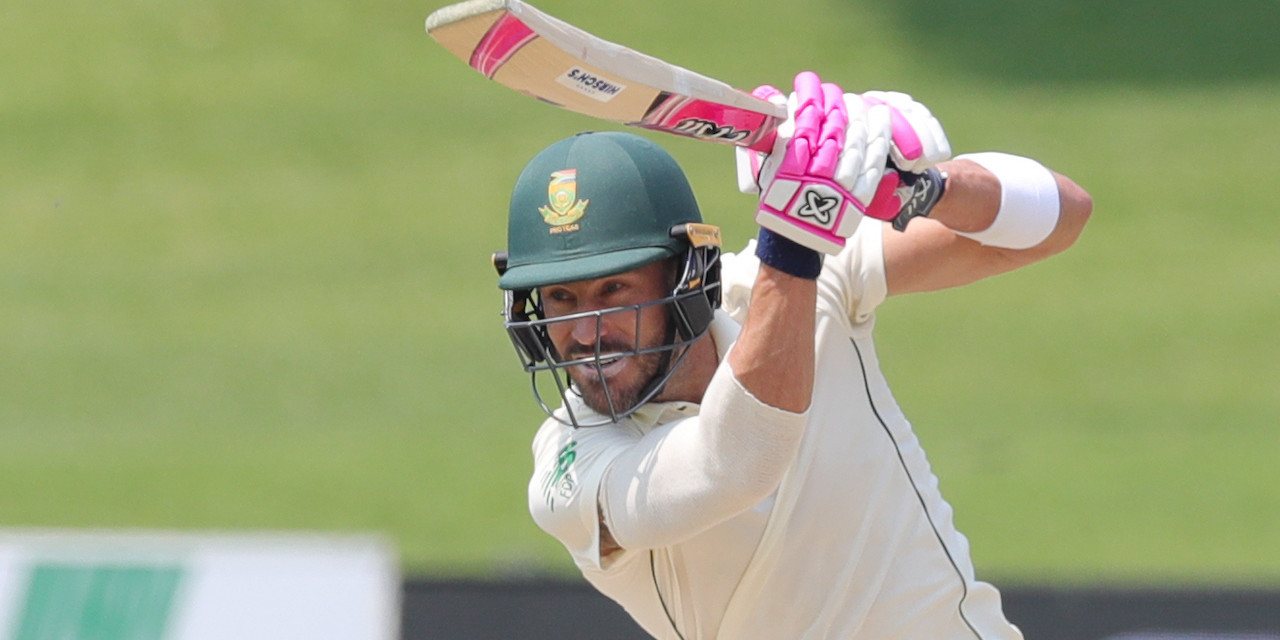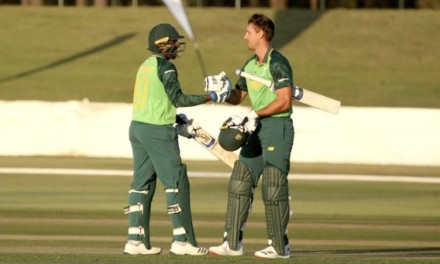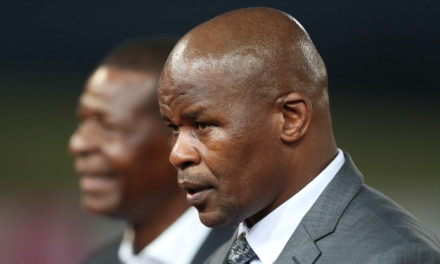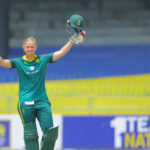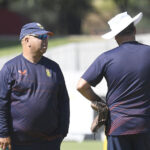Faf du Plessis has always been regarded as a charismatic leader, astute tactician, and dependable batter.
Widely considered to be a future South African cricketer right from his school days at the Afrikaanse Hoër Seunskool, it would have been fair to assume that Du Plessis’ autobiography would revolve around his numerous cricketing exploits.
Upon reading the book, however, it is evident that cricket is merely the backdrop in Du Plessis’ story.
Faf: Through Fire explores the human element of an accomplished international cricketer, who was driven to serve South African cricket by investing in the human beings that represented all of South Africa on the cricket field.
Du Plessis chronicles his career in cricket through the lens of leadership, culture, and relationships. Although these are recurring themes in the book, Du Plessis’ ability to reflect honestly on his experiences stands out. He writes about the effect of his parent’s divorce on his inability to respect relationships as a young adult. The lack of a template for a healthy relationship contributed to Du Plessis’ frequent indiscretions in his personal life.
Du Plessis credits his wife, Imari, for bringing about balance to his life and facilitating a values-driven approach to their relationship, which would then be the bedrock of his leadership philosophy in the South African cricket setup.
Despite the challenges in Du Plessis’ childhood with respect to his parents’ dynamic, his father instilled the discipline and mental toughness that allowed him to successfully navigate the hurdles he faced throughout his professional career. Du Plessis was also grateful for his mother’s tenderness and sensitivity that balanced his father’s strict and uncompromising approach to raising him.
Although Du Plessis showed incredible discipline in his cricket career, it wouldn’t be until he turned 26 that that discipline was also a part of his personal life.
After being hailed as a child prodigy in school cricket, Du Plessis’ road to becoming an international cricketer in January 2011 was long-winded, unlike his schoolmate and friend, AB de Villiers, who made his international debut in December 2004. Du Plessis writes about a sense of jealousy that he felt seeing De Villiers’ talent blossom on a cricket field. Once du Plessis learned to channel his energy more positively, he was able to appreciate De Villiers’ prodigious talent to the extent that he became his most vocal supporter.
In trademark Du Plessis humour, he describes a gathering organized by De Villiers on the eve of a Test match against England in January 2005 in which he scored 92 and 109.
“AB opened the batting with Herschelle Gibbs, so there is every chance that neither of our openers slept much the night before, but I can only testify for AB.”
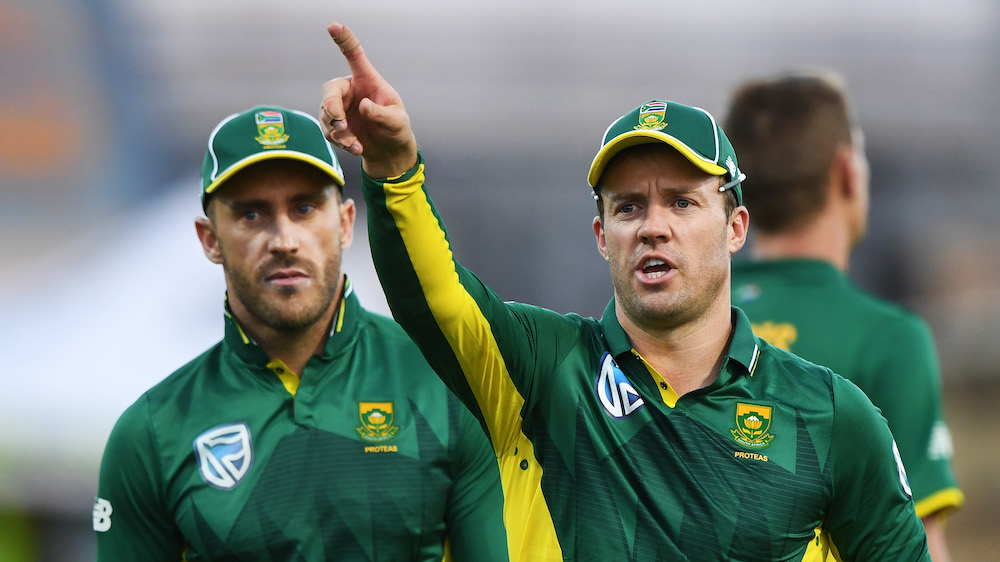
Du Plessis’ longstanding commitment to representing South Africa is evident throughout his autobiography. It reflects in his decisions early on in his professional career when he turned down a lucrative Kolpak deal that would enable him to play for England, right to the end of his international career when he tried to work with Cricket South Africa to find a way for him to play the ICC T20 World Cup in 2021.
Team culture has been integral to Du Plessis’ career in professional cricket. He was first hooked on to the idea through Richard Pybus, who ensured that all players were treated equally at the Titans. This was essential after an unpleasant encounter with Proteas batter, Daryll Cullinan, who expostulated Du Plessis for disrespecting his seniority by sitting next to him. The episode left a sour taste in Du Plessis’ mouth, but it was a valuable lesson he learned early in his career, which ensured that he would strive to make young players entering the team environment feel like they are valued members of the setup.
Du Plessis would feel this way when he made his international debut for South Africa in January 2011, shortly after an important culture camp held at Hennops River in Centurion. Although Du Plessis was not part of the team present at the camp, the ideas revolving around team culture would build the foundation for his career as a player and captain.
Throughout the book, Du Plessis insists that South African teams are at their strongest when leaders pay attention to soft skills in conjunction with hard skills.
He writes, “In my opinion, the Proteas environment is at its best when soft skills are given the same priority as hard skills: we have different cultures in the South African side, and we have to be sensitive to different perspectives. For that, you need to value relationships and lead with empathy and understanding.”
Du Plessis highlights the importance of the capping ceremony for a debutant. Inspired by Graeme Smith’s captaincy, Du Plessis asked players who knew the debutant closely to speak about the player. It was one way to ensure that players entering the team environment felt welcomed.
Owen Eastwood, a world-renowned performance coach from New Zealand, who worked extensively with the South African team on its team culture, and formed a partnership with Du Plessis when he was appointed captain, attested to the effectiveness of combining a human-centred approach with the technical skills. Du Plessis implemented a system of feedback within the team, where he asked Eastwood to speak with players individually and get their views on how the leadership of the team could improve.
The focus on soft skills drove Du Plessis to interact with players new to the team environment through regular coffee and meals. The emphasis, Du Plessis wrote, was on ensuring that players understood that their value to the team environment was beyond their performances on the cricket field. He also speaks highly of the contribution of senior players such as AB de Villiers, Hashim Amla, JP Duminy, Dale Steyn, and Morne Morkel, who were all given specific roles in an effort to maintain a nurturing team environment.
Another important team practice that Du Plessis held dear was the “no cell phone” policy for a half-hour after a game. It gave the team time to connect with each other after a victory or a loss. In particular, it was vital to protect players from the abuse they would typically receive on social media if they did not perform on the day. Du Plessis understood the impact of social media on a player’s mental health after he, and his family, received death threats following South Africa’s loss to New Zealand in the quarter-final of the 2011 World Cup.
The South African cricket team represented a wide variety of cultures. For the team to be accepted by 60 million South Africans as the national team, cross-cultural integration would be vitally important. Du Plessis’ recognition of this reality was triggered by an impromptu picture clicked on the cricket pitch after a win.
Admittedly, Du Plessis was “disturbed” because all the individuals in the picture were from the same cultural background, and he believed that the team needed to mix more consciously if it were to truly represent all South Africans.
Du Plessis assigns significant importance to the captain’s relationship with the head coach of the team. His healthy and fruitful partnerships with Russell Domingo and Ottis Gibson were attributed to them operating “as a unit.” Both, Domingo and Gibson, invested in their relationship with du Plessis and bought into the team culture that he was trying to create. Domingo’s empathetic approach to coaching with the phrase “everybody needs love” stuck with Du Plessis and he uses it often throughout the book. Although Domingo was familiar with the Proteas team culture, having worked under Gary Kirsten’s leadership, Du Plessis pays special respect to Gibson, an overseas coach, for buying into and respecting the team’s culture.

When Mark Boucher was appointed to coach the Proteas after a tumultuous period for South African cricket, Du Plessis struggled to connect with him in the way that he did with Domingo and Gibson.
“Mark’s relationship with me felt somewhat cold and distant. If I wanted something from him besides cricket, it had to come from me, and I wasn’t comfortable with that being our dynamic.”
Reflecting on his relationships with Domingo and Gibson, Du Plessis writes, “My only frame of reference was the two previous head coaches under whom I had captained the team. With Russell and Ottis, I had become used to coaches who invested heavily in our relationship. When we were under the pump, we’d have each other’s backs in public.”
The Du Plessis-Boucher partnership, in addition to Graeme Smith being appointed as Director of Cricket and Jacques Kallis as a batting consultant, was supposed to herald a new day in South African cricket. Instead, it left Du Plessis feeling insecure about his position in the team by the end of Boucher’s first series as coach.
“I was intensely frustrated by the end of the series. What was supposed to be a maiden voyage for Mark and me made me feel like a ship lost at sea.”
The biggest irony here is that Du Plessis had sought the appointment of Mark Boucher as a coach, Graeme Smith as Director of Cricket, and Jacques Kallis as a batting consultant long before Cricket South Africa formally appointed them in their positions.
It may appear as if Boucher lacks the warmth and soft skills to develop a relationship with Du Plessis.
However, Du Plessis clarifies that Boucher’s man-management style may have been different and incompatible with his own.
“It’s quite possible that I was still part of Mark’s plans for the future, but he had an approach to leadership that didn’t include soft skills and relational interactions. I just didn’t know him well enough to understand or appreciate his style.”
Du Plessis adds, “I couldn’t expect Mark to prioritise soft skills and relationships in the way I did. It’s not who he is. While he lacks the warmth I look for in a coach, his behaviour towards me might not have been him ignoring me.
“It was Mark coaching in the way that he knew best under extraordinary pressure and me finding it hard to adapt to a leadership approach that contrasted with mine in so many ways.”
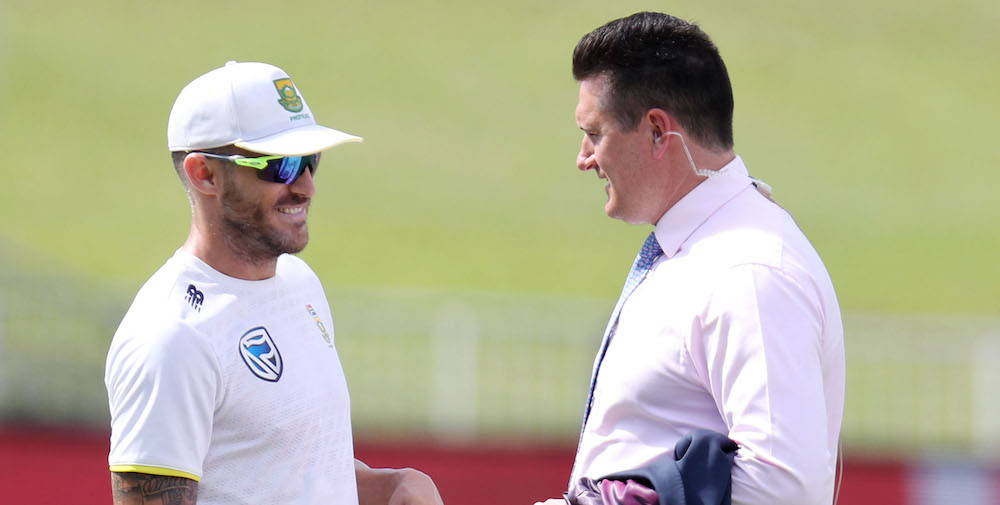
Du Plessis featured in three series for South Africa after relinquishing the captaincy. The disappointment he experienced at seeing a number of rituals that were instated during his captaincy no longer being followed is evident in his writing.
For instance, Du Plessis found Pite van Biljon’s capping ceremony to be a “diluted affair,” compared to the rituals that took place during his captaincy. He was also disturbed to see players focused on their cell phones right after a loss to Australia because the first thirty minutes after a game, in Du Plessis’ view, are crucial for team players to connect with one another.
Upon concluding Faf: Through Fire, it would be hard not to reflect on the degree of vulnerability that Du Plessis displays. Given that he was a part of dominant teams since his school days featuring future internationals such as AB de Villiers, Neil Wagner, Kruger van Wyk, Heino Kuhn, and Jacques Rudolph, where they lost two games in three years, it must have been challenging for Du Plessis to come to terms with the long transition that the Proteas faced under his leadership.
Considered to be the last in the golden generation of Proteas, he also won silverware with the Titans and his IPL franchise, Chennai Super Kings, multiple times.
To lead a South African team that was unable to replicate similar feats must have tugged at Du Plessis’ heartstrings, seeing that he was leading winning teams from such a young age.
As du Plessis wrote, “There are three words one should never forget or underestimate: Everybody needs love.”

